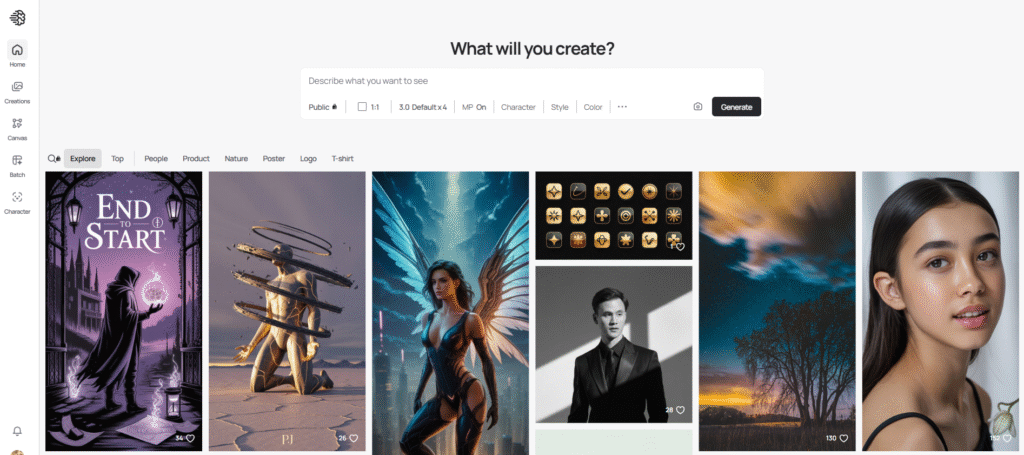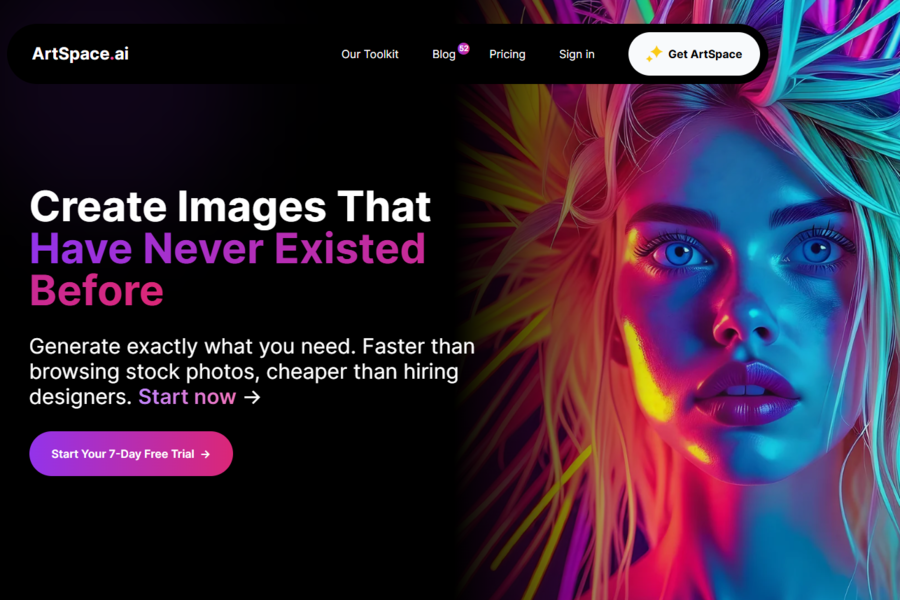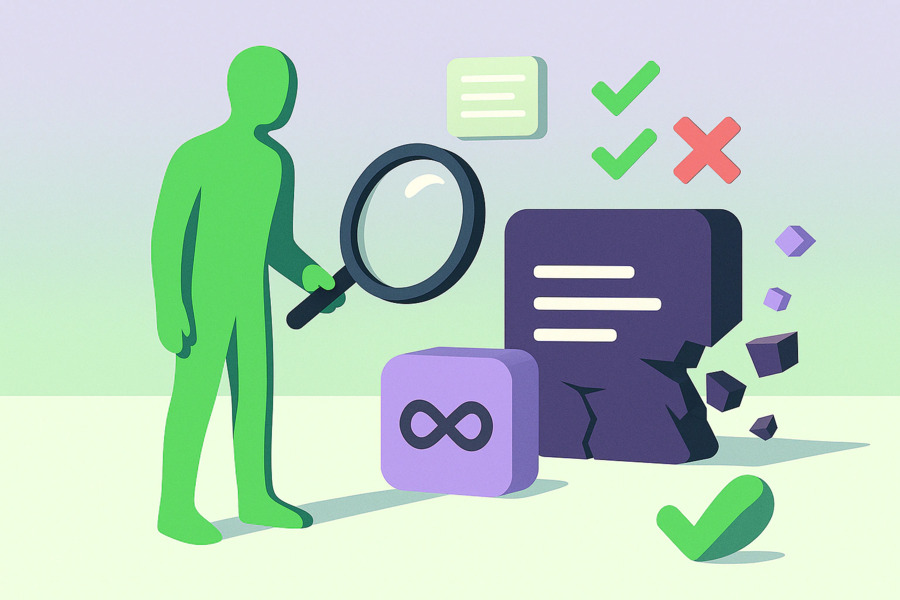If you’ve been exploring the world of AI image generation, you’ve likely encountered two standout names: Ideogram and Midjourney. Both bring impressive capabilities to the table—but which one truly fits your creative vision and workflow? Whether you’re a digital artist, content marketer, or a curious creator, this Ideogram vs Midjourney deep dive will help you cut through the noise and make an informed choice.
In this detailed comparison, we’ll break down the key strengths, weaknesses, and unique selling points of both platforms. By the end, you’ll know exactly which tool aligns with your goals—be it stunning artistic imagery or efficient text-integrated graphics. Let’s jump in!
What is Ideogram?

Ideogram has quickly built a reputation as one of the most user-friendly AI image generators available today. What sets it apart is its exceptional ability to integrate text into images—a feature many other tools, including Midjourney, often struggle with. Whether you’re designing logos, social media banners, or promotional materials, Ideogram combines natural language processing with an intuitive interface to help you bring ideas to life quickly.
Beyond its core functionality, Ideogram offers several tiers of access. From a free plan that lets you experiment risk-free to professional subscriptions that include private generation and high-volume output, it’s built to scale with your needs.
Pros
- Free Plan Available: This is a huge win for beginners or anyone just looking to test the waters. You can start creating without any financial commitment.
- Text-Generation Superstar: Ideogram’s ability to render clean, accurate text within images is a game-changer for anyone needing to create posters, logos, or banners.
- Intuitive User Interface: The web interface is clean and straightforward. You can select styles, aspect ratios, and features with just a few clicks, making it incredibly accessible for beginners.
- High-Volume Production: Its plans offer a higher volume of generations for the price, making it a great option for users who need to produce a large number of images.
Cons
- Limited Free Prompts: The free plan, while great, comes with daily credit limits that can be used up quickly.
- Less Artistic Sophistication: While it creates high-quality images, it often lags behind Midjourney in terms of photorealism and complex, artistic rendering.
- Higher Tiers Can Be Pricey: Like any powerful tool, the advanced subscription plans come with a significant cost.
- Less Granular Style Control: Ideogram offers basic style controls, but they aren’t as fine-tuned or customizable as Midjourney’s parameter system.
What is Midjourney?

If Ideogram is the handy all-rounder, Midjourney is the virtuoso—a tool revered for its extraordinary ability to create visually stunning, highly detailed, and artistically rich images. Initially accessible only through Discord, it now offers a web interface, broadening its reach while maintaining its depth of functionality.
Midjourney is the go-to for illustrators, concept artists, and designers who prioritize aesthetic excellence. Its consistently evolving AI model excels in rendering light, texture, and composition with a sophistication that few other platforms can match.
Pros
- Unmatched Image Quality: Midjourney’s ability to create stunning, detailed, and artistically rich images is its biggest selling point. Its focus on realism, lighting, and composition makes it the top choice for professionals.
- Extensive Style Control: Through its powerful parameters and reference images, Midjourney gives you incredibly granular control over your creations. You can fine-tune everything from stylization levels to chaos values to match your specific vision.
- Strong Artistic Capabilities: Midjourney is built for creativity. It excels at creating unique, evocative, and imaginative visuals that other tools can’t replicate.
- Active and Inspiring Community: The Discord community is a goldmine of inspiration. It’s a place to see what’s possible, learn from others, and get your creative juices flowing.
Cons
- Steeper Learning Curve: The reliance on Discord commands can be a pain point. While the web interface helps, it still requires a deeper understanding of commands and parameters than a tool like Ideogram.
- Poor Text Handling: This is Midjourney’s Achilles’ heel. Text in its images often appears distorted or unreadable, making it a poor choice for projects that require integrated typography.
- Slower Generation Times: Creating complex, high-quality images can take longer, especially compared to the faster, high-volume generations of Ideogram.
For more detailed information, read our post on Midjourney Review.
Ideogram vs Midjourney: A Detailed Feature Comparison
Now let’s stack them side by side. How do Ideogram and Midjourney really compare across the features that matter?
1. Image Quality and Creative Output
Midjourney is the undisputed leader in artistic quality and photorealism. It excels in creating images with depth, nuance, and professional-grade finish.
Ideogram produces very good results, but typically lacks the same level of refinement and detail.
2. Ease of Use
Ideogram wins hands-down in usability. Its intuitive interface allows even beginners to generate great visuals quickly.
Midjourney, while powerful, requires familiarity with Discord or its command system, making it less immediately accessible.
3. Text Rendering Capabilities
This is Ideogram’s signature strength. It reliably generates crisp, legible text within images—a must for commercial design.
Midjourney, unfortunately, still falls short in this department.
4. Customization and Style Control
Midjourney offers deeper and more granular control over styling. Advanced parameters allow precise adjustments, making it ideal for artists with a specific vision.
Ideogram provides solid preset options but less fine-tuning ability.
5. Workflow and Marketing Integration
Ideogram is designed with content production in mind. Features like batch generation and third-party integrations make it ideal for marketing teams and social media managers.
Midjourney is more focused on individual artistry and lacks the same embedded workflow tools.
Ideogram vs Midjourney: Pricing Plan
Ideogram Pricing Structure
Ideogram uses a credit-based system across four tiers:
- Free: Limited daily credits — ideal for experimentation.
- Basic: $7/month for 400 credits (approx. 1,600 images).
- Plus: $15/month for 1,000 credits (approx. 4,000 images), including private generation.
- Pro: $42/month for 3,500 credits (approx. 14,000 images), aimed at professionals and high-volume users.
Midjourney Subscription Plans
Midjourney uses a simpler subscription model:
- Basic: $10/month — good for casual users.
- Standard: $30/month — the most popular tier for regular use.
- Pro: $60/month — includes stealth mode (private generation) and expanded GPU time.
Midjourney doesn’t use a credit system but instead allocates GPU time per month, which influences how many jobs you can process, especially at higher resolutions.
Conclusion on Ideogram vs Midjourney
So, who wins the Ideogram vs Midjourney battle? The answer depends entirely on your needs.
Choose Midjourney if you prioritize top-tier artistic quality, stylistic control, and photorealistic results. It’s perfect for artists, illustrators, and anyone creating visuals where impact and detail are critical.
Choose Ideogram if you need an easy-to-use, efficient tool that excels at text rendering and high-volume output. It’s ideal marketers, small businesses, and designers who want to quickly produce quality graphics with integrated typography.
Both tools are powerful in their own right. Your decision should hinge on whether you value artistry and depth (Midjourney) or efficiency and functionality (Ideogram).
Whichever you choose, you’re stepping into a world of creative possibility. Happy creating!



